Abstract
Antimicrobial activity and physicochemical properties of benzoyl peroxide (BP) were investigated to determine the mechanism of action for the compound as an antiacne agent. The MICs and MBCs against nine strains of Propionibacterium acnes ranged between 100 and 800 micrograms/ml in a nutrient broth system, with a median fourfold increase in activity demonstrated when lipid was added. The partition coefficient of BP in a 50:50 artificial skin lipid and water system was greater than 2,500, with the concentration of BP soluble in lipid measured at 1.12% and in water at 0.005%. When BP was incubated in the presence of a lipid mixture, reaction products were formed, with evidence that at least some of these compounds possessed antibacterial activity. These results suggest that BP reduces the P. acnes numbers in sebaceous follicles because of good lipid solubility and interaction with the lipid component, the latter property contributing to the antimicrobial activity of the compound in a high-lipid environment.
Full text
PDF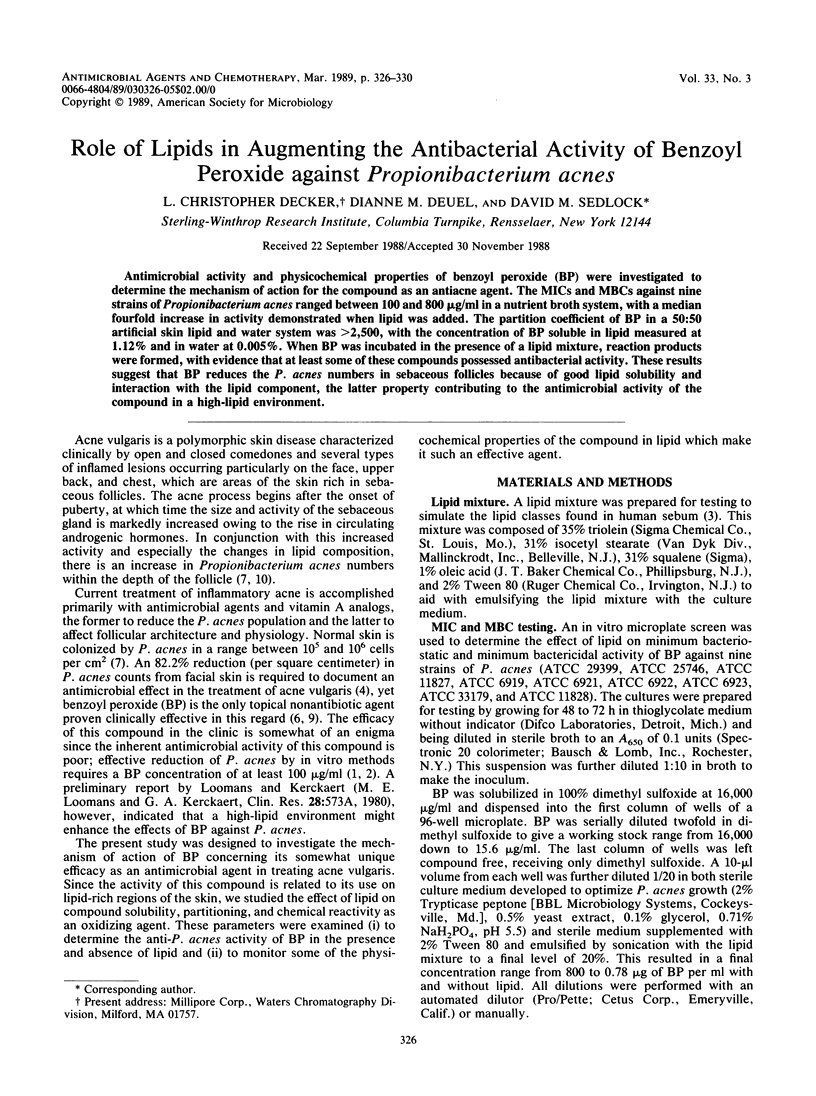
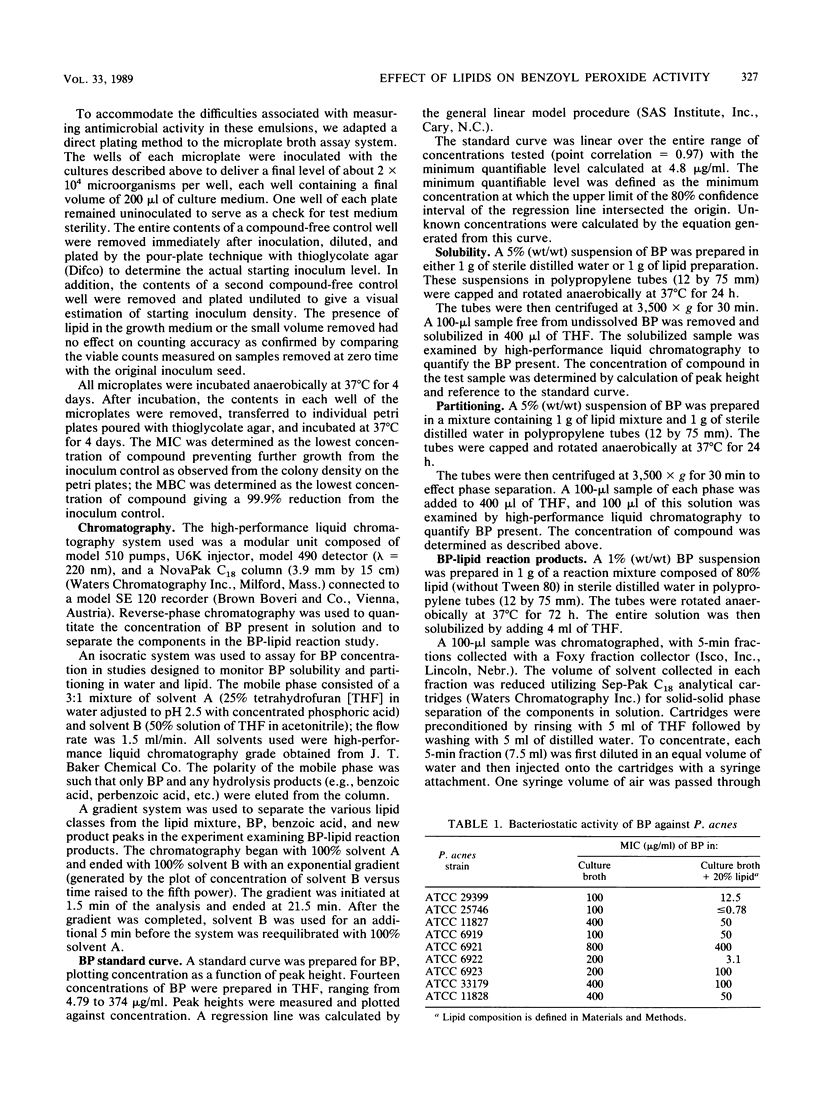
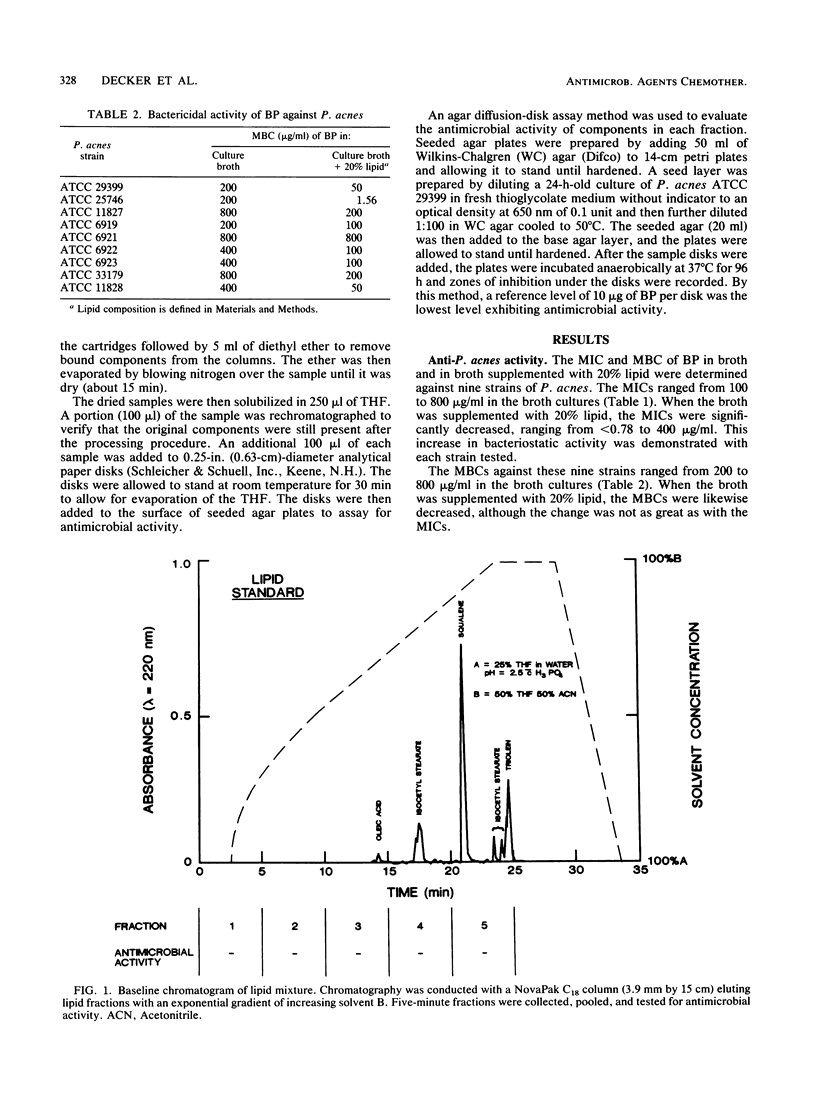
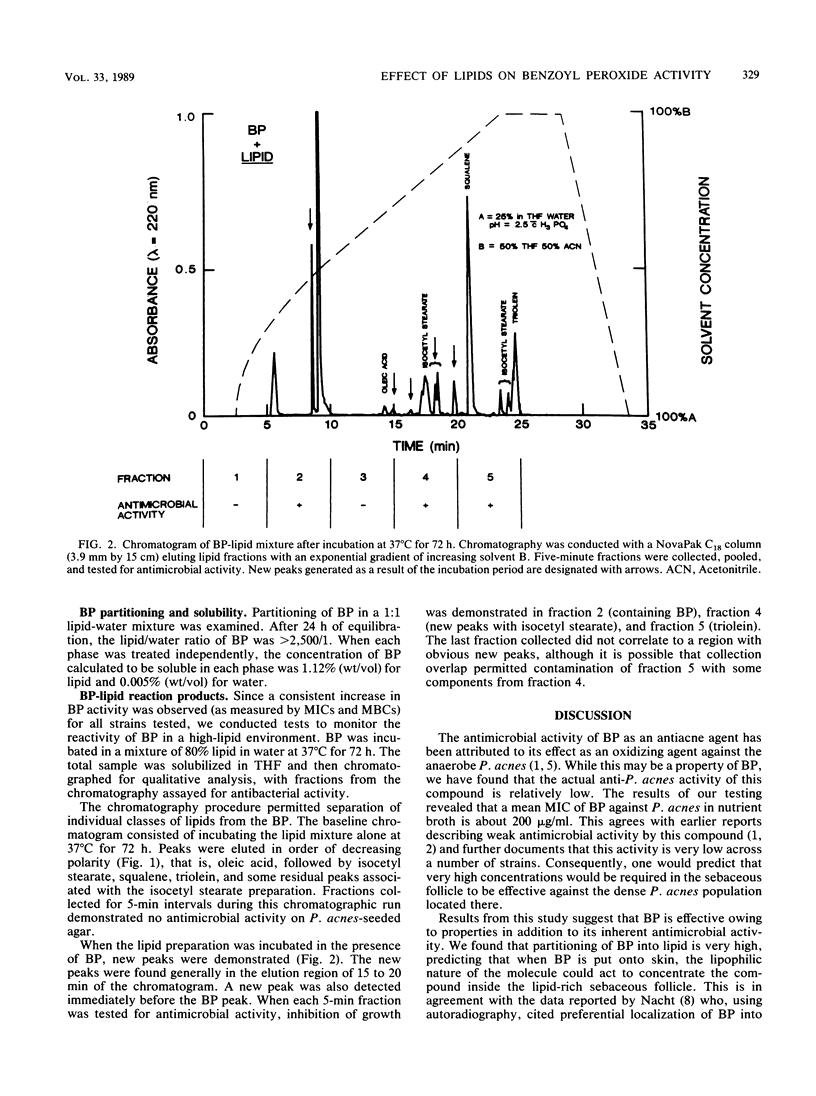
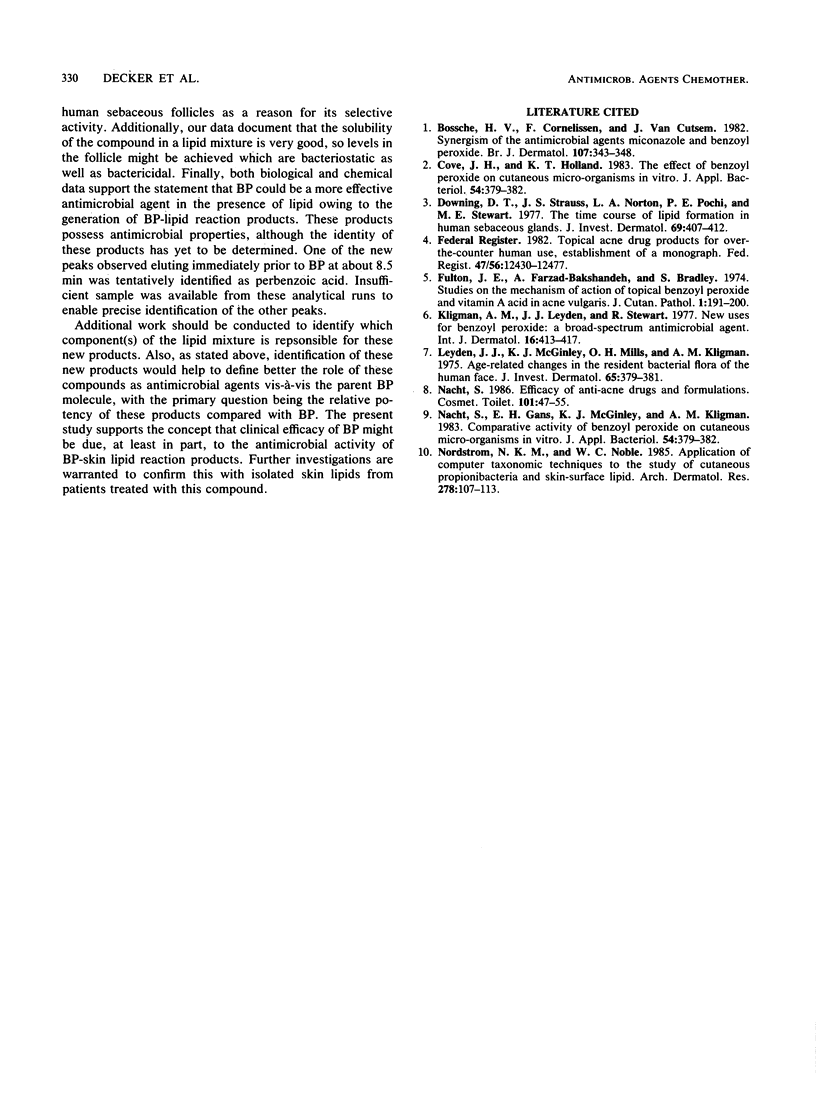
Selected References
These references are in PubMed. This may not be the complete list of references from this article.
- Cove J. H., Holland K. T. The effect of benzoyl peroxide on cutaneous micro-organisms in vitro. J Appl Bacteriol. 1983 Jun;54(3):379–382. doi: 10.1111/j.1365-2672.1983.tb02631.x. [DOI] [PubMed] [Google Scholar]
- Cove J. H., Holland K. T. The effect of benzoyl peroxide on cutaneous micro-organisms in vitro. J Appl Bacteriol. 1983 Jun;54(3):379–382. doi: 10.1111/j.1365-2672.1983.tb02631.x. [DOI] [PubMed] [Google Scholar]
- Downing D. T., Strauss J. S., Norton L. A., Pochi P. E., Stewart M. E. The time course of lipid formation in human sebaceous glands. J Invest Dermatol. 1977 Oct;69(4):407–412. doi: 10.1111/1523-1747.ep12510327. [DOI] [PubMed] [Google Scholar]
- Fulton J. E., Jr, Farzad-Bakshandeh A., Bradley S. Studies on the mechanism of action to topical benzoyl peroxide and vitamin A acid in acne vulgaris. J Cutan Pathol. 1974;1(5):191–200. doi: 10.1111/j.1600-0560.1974.tb00628.x. [DOI] [PubMed] [Google Scholar]
- Kligman A. M., Leyden J. J., Stewart R. New uses for benzoyl peroxide: a broad-spectrum antimicrobial agent. Int J Dermatol. 1977 Jun;16(5):413–417. doi: 10.1111/j.1365-4362.1977.tb00769.x. [DOI] [PubMed] [Google Scholar]
- Leyden J. J., McGinley K. J., Mills O. H., Kligman A. M. Age-related changes in the resident bacterial flora of the human face. J Invest Dermatol. 1975 Oct;65(4):379–381. doi: 10.1111/1523-1747.ep12607630. [DOI] [PubMed] [Google Scholar]
- Nordstrom N. K., Noble W. C. Application of computer taxonomic techniques to the study of cutaneous propionibacteria and skin-surface lipid. Arch Dermatol Res. 1985;278(2):107–113. doi: 10.1007/BF00409216. [DOI] [PubMed] [Google Scholar]
- Vanden Bossche H., Cornelissen F., van Cutsem J. Synergism of the antimicrobial agents miconazole and benzoylperoxide. Br J Dermatol. 1982 Sep;107(3):343–348. doi: 10.1111/j.1365-2133.1982.tb00365.x. [DOI] [PubMed] [Google Scholar]


